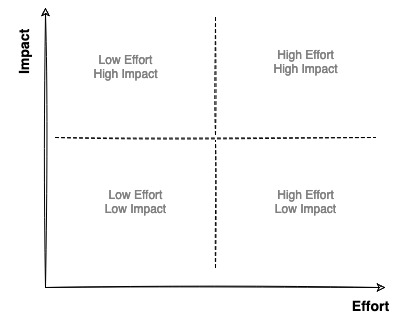The Impact-Effort-Matrix is a classic tool to reflect on actions you want to take and to consider if they are worth it. On the X-Axis you have the effort ranging from low to high and on the Y-Axis you have the expected impact, also ranging from low to high.

I tried this format in a retro as the check out/closing the retro in the last of the 5 phases & we as a team sorted our action items, that we defined during our discussion, into the matrix. The benefits of this were:
- We talked about the action items in detail and were able to find a missing aspect of one action item, that we added then.
- We evaluated if there are action items that are not worth putting effort in (low impact – high effort or low impact – low effort).
- We evaluated if it is possible to achieve the action items in the next iteration. If we would have had only high effort items it would not be likely to achieve them.
- We are able to prioritze the action items and start working on the quick wins (low effort – high impact).
- We evaluate how confident we are, that the action items will improve our work. Many items in the high impact section reflect this.
With this technique it is unlikely that you will define some action items just for the sake of it. It forces you to evaluate them, estimate them and think about the value – just like you do with the items in the sprint. I will consider it to make it an inherent part of the retrospectives and placing the action items during the discussion into it rather than sorting it after the discussion.